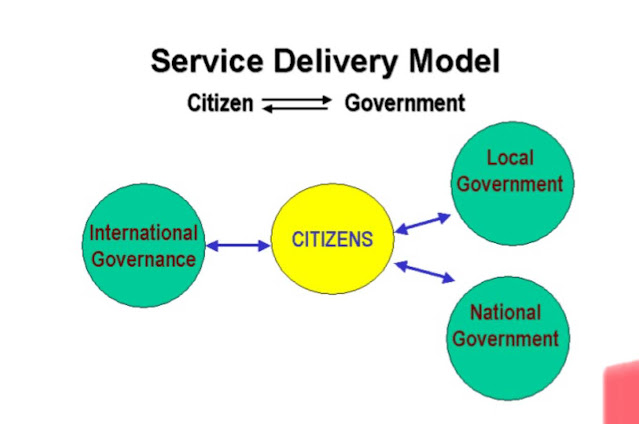What is E-Governance? Discuss broadcasting and interactive-service models in detail
E-Governance
- It is a part of e-Government. E-Governance is dealing with all regulations and policies to control the services provided by the e-Government. However, the E-Government is an electronic government, which should be regulated by the E-Governance.
- Moreover, e-Governance refers to the utilization of information and communication technology (ICT) for providing government services, disseminating information, communication operations with the general public.
Broadcasting Model/ Wider Dissemination Model
Principle
• Broadcasting model is based on mass dissemination of governance-related information which is already available in the public domain into the wider public domain using ICTs.
• This raises awareness among the citizens about ongoing governance processes and government services that are available to them and how they can benefit from them
• The application of this model using appropriate technologies, could reduce the "information failure situations".
Applications:
• Putting governmental laws and legislations online
• Making available the names, contact addresses, emails, mobile numbers of local/ regional/ national government officials online.
• Make available information such as governmental plans, budgets, expenditures, and performance reports online.• Putting key judicial decisions of value to general citizens and creating precedence for future actions online. viz. key environmental decisions, state vs. citizen decisions, etc.
Example of Wider Dissemination Model
Like in India: Directory of Official Websites of Government of India National Informatics Centre (India) is the official website of the Government
India which makes available Ministerial Information, Indian Laws, and Legislation also
Online, Contact Details, etc. online for public access. http://goidirectory.nic.in/exe.htm#min (Parent Website: http://www.nic.in)
Evaluation
• The Broadcasting Model is a stepping stone to more complex Digital Governance models. It also the most fundamental model as it enhances 'access' and 'flow' of information to a segment of the society, which is essential to bringing good governance.
• In several developing counties, even the basic governance-related information is unavailable for instance, the opening and closing times of government offices, or information government departments and units that deal with specific issues such as agricultural subsidies or getting a license for opening a business.
• Central and state governments in developing countries need to aggressively adopt this model to provide greater governance services to their constituencies, and to enhance the participation of citizens in the governance process.
Interactive Service Models
Principle
- It is a consolidation of the other digital governance models and opens up possibilities for one-to-one and self-serviced participation of individuals in governance processes. ( or opens up for direct participation of individuals in the governance process.)
- The Interactive- service model makes possible various services offered by the government to be directly accessible to citizens.
- the participation is direct and not through representatives.
- . It can bring greater objectivity and transparency in decision-making processes, and give a greater feeling of involvement and empowerment, provided that individuals are willing to engage in the governance processes.
- Under this model, the various services offered by the government become directly available to its citizens by opening up an interactive Government to Consumer to Government (G2C2G) channel in various aspects of governance.
Applications
This model could be applied in the following possible ways:
• To establish an interactive communication channel with key policy-makers and members of planning commissions.
• To conduct electronic ballots for the election of government officials and other office-bearers.
• To conduct public debates/opinion polls on issues of wider concern before the formulation of policies and legislative frameworks.
• Filing of grievances, feedback, and reports by citizens with the concerned governmental body. Establishing decentralized forms of governance.
• Performing governance functions online such as revenue collection, filing of taxes, governmental procurement, payment transfer, etc.
Example of organization for Interactive service model
http://www.gyandoot.net/gyandoot/intranet.html
India: Gyandoot Gyandoot is an intranet in the Dhar district connecting rural cybercafes catering to the everyday needs of the masses. The site has the following services to offer in addition to the hope that it has generated by networking, the first district in the state of Madhya Pradesh in India
- Commodity/ Agricultural Marketing Information System
- Copies of land maps
- On-Line Registration of Applications
- Public Grievance Redressal
Evaluation
- This model is more embedded in digital-governance initiatives in the developed countries and has often been proposed for implementation in developing countries. Such forms of solution transfer may not be very effective.
- The model is on the higher end of technology reliance as compared to the other models. This makes it difficult to replicate in developing countries in the absence of individual and secure ICT access.
- Various other issues also need to be considered carefully before such blind duplication can be attempted in developing countries.
- However, the trend is definitely in this direction and sooner or later will be implemented in all the countries with due modifications for local adaptation.





Comments
Post a Comment